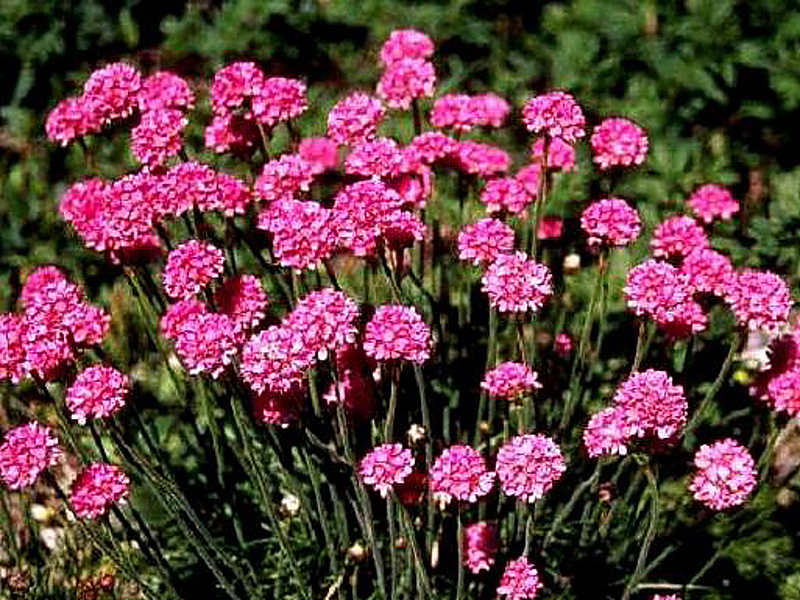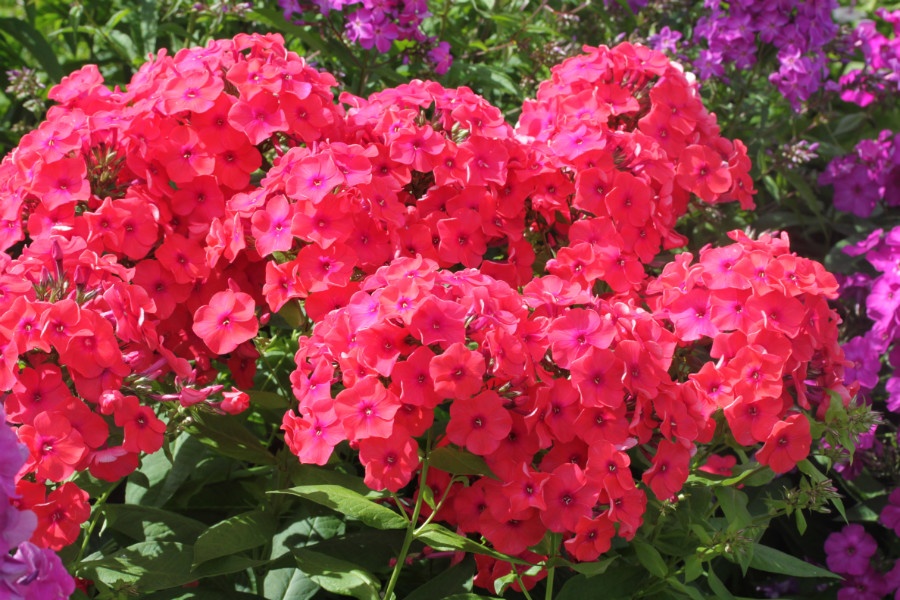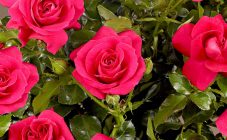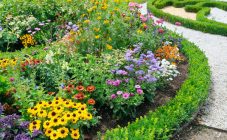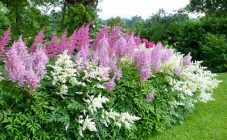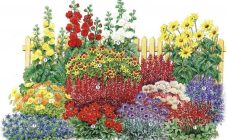Content:
Creating beautiful flower beds in a summer cottage is a rather difficult task. To get a bright flower garden blooming all summer, it is important to take into account many points: the color palette, the shape of the flower bed and the types and varieties of flowers.
The basics of landscape design
When creating flower beds on your own, you need to understand how to harmoniously place and plant plants so that the flower bed blooms all summer. There are several basic principles and rules of landscape design that will help with this:
- Before you go for the purchase of plants, it is important to find a place for them in the flower bed and study the features of the site: soil type, acidity, illumination. Depending on these parameters, the type of crops is selected.
- It is better for novice gardeners to plant unpretentious crops for the first time, and also limit themselves to 3-4 species.
- It is best to choose plants for planting in the same flower garden that require similar care and growing conditions.
- To avoid the disorderly arrangement and occurrence of different types of crops, it is better to arrange group plantings of the same type of plants.
- Great attention should be paid to the color scheme. A bright motley flower bed will rather talk not about beauty, but about bad taste. It is best to pair some bright colors with white.
- In order for the flower bed to bloom all summer, you should choose plants with different flowering periods for planting.
- When composing a composition of low-growing perennial flowers for a flower bed that blooms all summer, it is important to provide a viewing angle. If the flower garden is visible from all sides, then the taller plants are placed in the center, around the middle, then the lowest.
- To achieve the desired result when creating a flower bed, it is important to draw up a plan in advance. A landscape designer can help with this.
The best low-growing perennials
Low-growing plants include crops whose height does not exceed 0.5 m. The purpose of this group of plants is different. They can be used as a backdrop for taller plants or used to create flower beds under trees. Often, low-growing perennials for continuous flowering flower beds are used to design pedestrian and sidewalk paths or garden paths. In accordance with the many years of experience of amateur gardeners, a list of the most demanded and popular perennials can be distinguished. Which one to choose, each owner must decide.
Astrantia is large
A small plant, up to 70 cm, which will delight with its beauty from June to the end of August. Differs in beautiful large flowers.
Prefers sunny areas. Unpretentious in care, undemanding to soil. Astrantia comes in a variety of colors, with white, pink and red flowers being the most common, but there are unique varieties that combine several shades.
Oak sage
Also known as salvia. This perennial shade-loving plant, blooming all summer, has a height of 35 to 90 cm. These undersized flowers for a flower bed, blooming all summer, are collected in inflorescences in the form of candles, which makes the culture very interesting. Prefers nutritious soil, requires attention.
Armenia seaside
An unpretentious low flower that looks best in rocky gardens and rock gardens. Prefers clay or sandy soil. There is a large selection of varieties that differ in parameters.
Alyssum Marine
It is often found under the names of wheaten, lobularia, beetroot. A herbaceous plant, the height of which does not exceed 20 cm. The stem spreads on the ground, dense abundant flowering begins in early June and continues until the very frost. If the winter is not too frosty, then it is well experienced without insulation. Flowers come in different shades: white, yellow, purple, pink.
Arenaria crimson
Belongs to the carnation family, it is distinguished by a crimson stem and flowers in the form of pale pink stars. Blooms in June and blooms until October. Height reaches 15 cm, prefers sandy soil. Drought tolerant.
The matrix is excellent
This popular perennial is better known as chamomile or feverfew. Flowering lasts from June to July, but if dry inflorescences are removed in a timely manner, then it can be extended until August.
Phlox
A perennial plant can decorate the garden for 5 months. Most often, the following varieties are found in flower beds: paniculate, subulate, stolon-bearing.
Perennial chrysanthemum
The flowering of this perennial begins in mid-summer. Its peculiarity is that after frost the flowers do not fall off. The perennial plant is often called the queen of autumn. In order for the shrubs of perennial chrysanthemums to bloom earlier, they should be planted in sunny, bright areas. In flower beds from the north, chrysanthemums can bloom much later.
Creating a flower bed plan
Before planting a flower garden, its sketch is initially developed. To do this, take a sheet of paper and colored pencils. When drawing up a plan, it is important to reflect:
- The layout of the flower garden and its contours, in accordance with the scale;
- Placement of plants of a dominant and complementary nature;
- The distance between each crops and the same type of group plantings;
- Features of the choice of colors.
An important point when creating a flower bed is the combination of crops. Below are several options for decorating a flower garden using perennial and annual crops.
Design options for flower beds
| Flowerbed type | Name | Flowers used |
|---|---|---|
| Flower beds with original shapes | Heart | In the center are placed petunias of bright pink color. The first contour should be filled with lilac phlox, the second - also phlox, but purple. |
| Chamomile | The core of the improvised flower is filled with marigold seedlings, five petals - with Iberis. | |
| Sun | The very heart of the sun can be filled with snapdragons, the petals can be made from marigolds. | |
| Curb flower bed | Lilac hedge | One row - located near the hedge, the second - fill with violets |
| Heavenly tones | Nemophila is planted near the hedge, the second row is filled with blue ageratum | |
| Tenderness | The first row near the hedge is filled with dwarf asters of various colors, in the second row white phlox are planted. | |
| Flowerbed Island | Ira in contrast | Marigolds and gentian are used for planting |
| Pink dreams | A combination of daisies, malnyanka and aubriets will look good |
Growing and care
Any plant needs an appropriate approach. To get a beautiful flowerbed as a result, you will need to follow a few simple rules.
When growing undersized flowers in flower beds, several problems can arise:
- Pulling. The most common problem that one can face. If the stem grows too long, it can ruin the overall appearance.
- Fast-growing large leaves that hide inflorescences behind them.In this case, the flowerbed looks like a total green mass, on which colored specks are barely visible.
Such problems are very easy to prevent if you follow simple rules when growing:
- When fertilizing, it is important not to overdo it with nitrogen formulations. They are intended to stimulate the growth of greenery; they do not affect flowering in any way.
- Of the fertilizers, it is best to use special complex compositions for flowers.
- Density can provoke excess stem elongation, therefore, seeds and seedlings should be spaced at a distance when planting.
- In order not to provoke the stretching of the stem, do not place plants in the shade that prefer sunny areas.
- Pruning leaves and dry inflorescences should be carried out regularly if the plant requires it. Such a measure will not allow the lower part to grow.
Creating a flower bed is a long and complicated process. If you approach it wisely and carefully plan future plantings, as well as varieties and types of plants, as a result you can get a beautiful flower bed that will delight you with flowering throughout the season.

